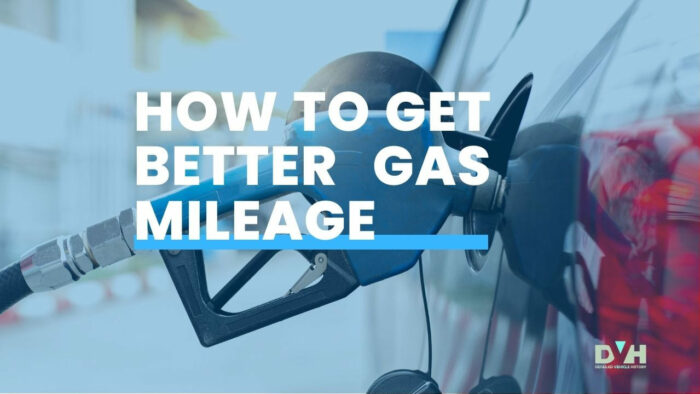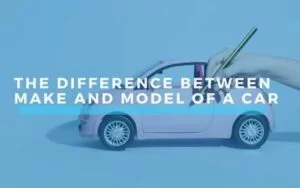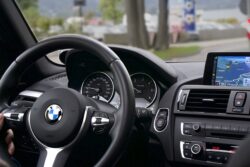According to J.D. Power, the average American spends $150 to $200 on gas every month. This amount also varies depending on the state and has left many car owners seeking ways to get better gas mileage and save money on fuel. There are several tips you can use to significantly reduce the amount of money spent on gas each month and improve your car’s gas mileage. In this article, we will be looking at some helpful tips to help car buyers get better gas mileage.
What is gas mileage?
Gas mileage, also referred to as fuel efficiency, is the quantity of fuel required to cover a certain distance. It is a measure of how far a vehicle travels on a given amount of fuel. Gas mileage or fuel efficiency is usually expressed in miles per gallon (mpg). Car buyers are always on the lookout for vehicles with considerably high gas mileage, as the higher the gas mileage, the more distance covered per gallon of fuel.
How to get better gas mileage
To get good fuel efficiency and improve your vehicle’s gas mileage, there are a few helpful tips and strategies that you should remember. With these tips, you can be sure to save some money on fuel. These tips are:
- – Keep your vehicle properly maintained
- – Drive conservatively
- – Plan your trips
- – Use cruise control
- – Purchase the right fuel type for your vehicle
- – Buy a vehicle with good fuel economy
- – Know when to purchase fuel
- – Discard excess weight whenever possible
Keep your vehicle properly maintained
If you want to improve your vehicle’s fuel efficiency and get better gas mileage, then you should be dedicated to maintaining your vehicle regularly. Regular maintenance ensures that all vehicle parts are in check and working properly. Make sure to check your car tires and make sure they are properly inflated to the recommended pressure. Tires with less pressure than recommended may drag instead of rolling, and this would reduce the vehicle’s gas mileage.
Also, pay attention to the engine during maintenance. Have frequent oil changes and change the oil filter whenever necessary. Look out for any signs of damages or defects. If you notice your warning signs go off, there could be a safety issue with your vehicle that needs to be fixed immediately. Keeping your vehicle in good condition helps to significantly reduce fuel consumption and improve gas mileage.
ALSO READ: Differences Between A Salvage Title and Rebuilt Title
Drive conservatively
Driving conservatively is another simple tip that can help car owners get better gas mileage. To drive conservatively, you must be able to avoid bad driving habits. Some bad driving habits that increase a vehicle’s fuel consumption include hard braking, rapid acceleration, speeding, etc. The more often you practice bad driving habits on the road, the lower your gas mileage will be.
Some European vehicle tests say that hard braking, rapid acceleration, overspeeding, and other bad driving habits increase fuel consumption by 40%. To avoid this, try to be easy on the brakes and drive conservatively. Avoid overspeeding and rapid acceleration, too. Try to maintain a constant speed while driving, and you will be able to cut down on fuel costs and get better gas mileage.
Plan your trips
Having a plan for the day laid out before driving out is a good way to cut down on fuel consumption and improve gas mileage. You can make a list of the most required tasks for the day and get them done in one day. If you are going on a long trip, ensure to identify the shortest route and stick with it. You can easily get this done with a navigation tool like Google Maps. Avoid getting distracted along the way, and you will be able to get better gas mileage.
Use cruise control
Using cruise control is another effective way to improve your gas mileage. By maintaining a steady speed, cruise control can help you avoid sudden accelerations and decelerations that can waste fuel. Additionally, using cruise control on longer trips can help you maintain a steady speed, which improves fuel efficiency.
Purchase the right fuel type for your vehicle
In the past, car owners used to purchase premium fuel for regular cars because of its high octane rating and ability to improve their engine performance. However, if you want to keep your vehicle in its best condition, be sure to purchase the recommended fuel type for your vehicle. Regular gas has been improved to increase a vehicle’s engine’s performance, so you no longer need to use premium fuel on your vehicle to keep your engine healthy. Also, avoid using fuels with ethanol blends, as these fuels can even reduce your vehicle’s fuel efficiency.
ALSO READ: Is It Better to Buy a Used Car Compared to a New Car?
Buy a vehicle with good fuel economy
If you are in the used car market in search of a car for purchase or you’re looking for an upgrade, be sure to have a good look at the vehicle’s fuel economy. This way, you can be sure that you will not need to spend so much on fuel each month. To easily gain access to your vehicle’s fuel efficiency, it is recommended that you generate a window sticker for your vehicle.
A window sticker is a label that shows the basic car features and equipment to the user at one glance. With a window sticker from Detailed Vehicle History, you can easily gain access to information on the following:
- – Vehicle Description
- – Manufacturer’s suggested retail price
- – Fuel economy
- – Interior Features
- – Exterior Features
- – Mechanical Features
- – Optional equipment
- – Warranty information
- – Safety features
- – NHTSA safety ratings, and more.
With window stickers from Detailed Vehicle History, you can easily examine the fuel efficiency of the vehicles you are interested in and purchase the one that meets your needs. Also, to get the most out of your used car purchase, you need to know the right time to purchase a vehicle from a dealership.
Know when to purchase fuel
Knowing when to purchase fuel from stations is a big tip to help improve your vehicle’s mileage. Fuel expands with an increase in temperature and is denser at cooler temperatures. This means that purchasing fuel during the colder hours of the day would give you more fuel than during the hotter hours. To get the most out of your fuel purchase, make sure you purchase it during the early morning hours or late at night.
Discard excess weight whenever possible
Another important way to improve your vehicle’s fuel efficiency is by reducing its excess weight. Excess weight on a vehicle makes the vehicle require more energy to accelerate and maintain speed. More energy means that the engine has to work harder, thereby reducing fuel economy and gas mileage. Excess weight also makes it difficult for a vehicle to come to a stop, which means that you would have to increase the frequency of braking, and this means more fuel will be consumed. Be sure to drop off any extra load before going for trips to improve gas mileage by reducing the energy required for braking frequency, reducing wind resistance, and reducing wear and tear on tires.
Facts to Remember About Gas Mileage
Gas mileage, also known as fuel economy, refers to the number of miles that a vehicle can travel per gallon of fuel. Here are some facts to remember when it comes to gas mileage:
- The average fuel economy for passenger cars in the United States is around 25 miles per gallon (MPG), while the average for light trucks is around 20 MPG.
- Fuel economy standards are set by the government to encourage automakers to produce more fuel-efficient vehicles. In the US, the current Corporate Average Fuel Economy (CAFE) standard for passenger cars is 40.4 MPG, and for light trucks, it is 29.5 MPG.
- Gas mileage can vary widely depending on the type of vehicle and how it is driven. For example, a small compact car can achieve more than 50 MPG on the highway, while a large SUV may only get 15-20 MPG.
- Hybrid and electric vehicles generally have higher fuel economy ratings than traditional gasoline-powered vehicles. For example, the Toyota Prius hybrid has a combined MPG rating of around 50, while the all-electric Tesla Model S has a combined MPG equivalent of around 105.
- The Environmental Protection Agency (EPA) provides fuel economy ratings for all new vehicles sold in the US. These ratings are based on standardized tests that simulate real-world driving conditions and take into account factors such as city and highway driving and air conditioning use.
Improving gas mileage can save drivers money on fuel costs and reduce greenhouse gas emissions. Simple steps such as keeping tires properly inflated, avoiding rapid acceleration and braking, and removing excess weight from the vehicle can help improve fuel economy. Gas mileage can also be affected by factors such as weather conditions, traffic congestion, and the quality of the fuel used. So you have to keep these tips in the back of your mind when you are on the road to reduce fuel consumption easily and save some money on fuel.










